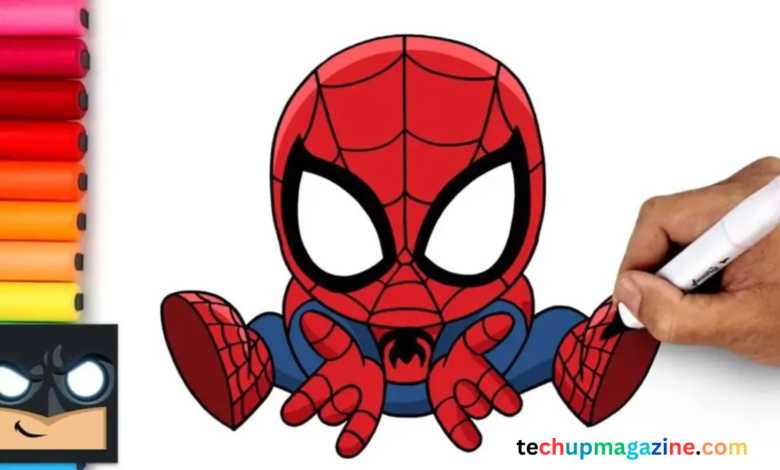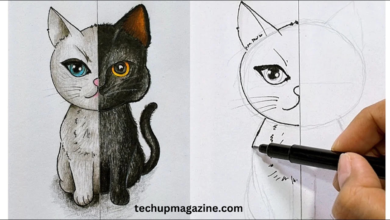Drawing:7barsug8u0w= Spiderman

drawing:7barsug8u0w= spiderman has always been an exciting task for artists of all skill levels. He’s one of the most iconic superheroes, instantly recognizable with his red and blue suit, web-slinging action, and acrobatic poses. But capturing the essence of Spider-Man on paper requires attention to detail, dynamic posing, and a feel for the character’s energy. Whether you’re an experienced artist or just starting, learning how to draw Spider-Man can be a fun and rewarding experience drawing:7barsug8u0w= spiderman.
In this article, we’ll explore how to master drawing Spider-Man in a way that captures his movement, style, and personality. We’ll go over the key aspects you need to consider when drawing him, like the anatomy, dynamic posing, and, of course, that iconic webbed suit. Let’s dive into how you can make your Spider-Man drawings pop off the page drawing:7barsug8u0w= spiderman!
Getting Started with drawing:7barsug8u0w= spiderman
drawing:7barsug8u0w= spiderman is a complex character, but starting with the basics can make drawing him easier. First, it’s important to understand the overall form and structure of Spider-Man’s body. He’s an agile, lean character, so his anatomy needs to reflect that drawing:7barsug8u0w= spiderman.
To begin, sketch a simple pose for Spider-Man, thinking about how his limbs will move. Since he’s often depicted in acrobatic stances, try to capture that sense of motion. Use light, basic shapes to outline the body before you add any details. Don’t worry about making it perfect on the first try; the key is to get a feel for how Spider-Man’s body is positioned drawing:7barsug8u0w= spiderman.
Essential Materials for drawing:7barsug8u0w= spiderman

drawing:7barsug8u0w= spiderman Before diving deeper, you’ll need a few materials that will make the process smoother. If you’re working digitally, a drawing tablet and stylus are perfect tools, but if you’re more traditional, grab some pencils, paper, an eraser, and colored markers or pencils for later stages. You want to start with lighter pencils like a 2H for sketching and then move on to darker pencils like a 2B or 4B for the line work drawing:7barsug8u0w= spiderman.
The goal in the early stages is to map out the figure loosely without worrying too much about fine details. This stage is all about getting proportions and gestures right drawing:7barsug8u0w= spiderman.
Anatomy and Proportions of drawing:7barsug8u0w= spiderman
Spider-Man is known for his athletic, yet sleek, physique. Unlike bulkier superheroes, Spider-Man has a leaner frame that allows for more dynamic, acrobatic movements. Drawing his anatomy correctly is crucial to capturing the essence of the character. Start by breaking down his body into basic forms—circles and ovals for the head, chest, and hips, and simple lines for the arms and legs drawing:7barsug8u0w= spiderman.
Drawing the Head and Torso
When starting with Spider-Man’s head, remember to keep it proportionate to the body. Spider-Man’s head is often depicted with a sleek, oval shape. Draw a basic oval and mark the guidelines for the face. The eyes are the most important feature of Spider-Man’s mask, so pay attention to their size and placement. His iconic large, almond-shaped eyes are a defining characteristic, giving him a unique look compared to other superheroes drawing:7barsug8u0w= spiderman.
For the torso, keep Spider-Man’s lean and muscular build in mind. His chest is wide but not overly muscular, and his waist tapers in, giving him an athletic shape. His torso should have a natural V-shape, with his chest being broader than his waist. Use soft lines to create the curve of the spine and the shape of the torso to give the drawing a dynamic feel, especially if Spider-Man is in a pose that suggests motion drawing:7barsug8u0w= spiderman.
Drawing Limbs and Muscle Definition
Spider-Man’s limbs should appear long and flexible, emphasizing his agility. When drawing the arms and legs, keep in mind the flow of motion. Spider-Man is constantly in motion, swinging through the city or dodging attacks, so his poses are rarely stiff drawing:7barsug8u0w= spiderman.
For the arms, start by sketching the shoulder to the elbow, keeping the biceps and triceps visible but not overly pronounced. His forearms are a bit bulkier, giving the sense of strength necessary for swinging from webs. Legs should also be lean but defined, particularly in the calves and thighs, where Spider-Man generates a lot of his jumping power. Make sure to keep the leg proportions realistic, giving him a slender but muscular look drawing:7barsug8u0w= spiderman.
Capturing Dynamic Poses
Spider-Man is often drawn in action-packed, dynamic poses that showcase his agility and flexibility. These poses are key to capturing his personality, and they can be challenging but incredibly rewarding. When drawing Spider-Man in action, focus on exaggerating his movements. He should look as if he’s mid-swing, about to leap off the page or land a punch on a villain drawing:7barsug8u0w= spiderman.
Choosing the Right Pose
The pose you choose for Spider-Man is crucial to how your drawing will turn out. Since Spider-Man is known for his web-swinging abilities, many of his most famous poses involve him leaping or swinging through the air. Look for references or create your pose by thinking about how his limbs move in motion.
When deciding on a pose, keep Spider-Man’s movement style in mind. He’s not a brute-force superhero who relies on heavy punches; instead, he’s quick, agile, and often outmaneuvers his opponents. Poses that showcase flexibility and quick, precise movements will give your drawing that Spider-Man flair.
Adding Motion to Your Drawing
To make Spider-Man’s pose look more dynamic, consider using lines of action. These lines help create a flow to the character’s body and guide the viewer’s eye through the movement. For example, if Spider-Man is swinging through the air, the line of action might curve through his body, emphasizing the arch of his back or the bend of his arm as he reaches for his next web.
Don’t be afraid to stretch or exaggerate some parts of the pose. Spider-Man’s flexibility allows for more extreme poses than a regular human, so bending the torso or limbs in ways that would be unnatural for most people is perfectly fine. It’s part of what makes him such an exciting character to draw.
Detailing the Iconic Spider-Man Suit
Now that the pose and anatomy are in place, it’s time to add the details that make Spider-Man instantly recognizable—his suit. The design of Spider-Man’s suit has changed over the years, but the basics remain the same: the red and blue colors, the web pattern, and the spider symbol on his chest.
Drawing the Web Pattern
One of the trickiest parts of drawing Spider-Man is getting the web pattern on his suit right. The web design covers most of the red portions of the suit, including the head, chest, and arms. Start by marking where the web lines will go. Typically, the webbing radiates outward from a central point on the face and chest.
When drawing the web pattern, make sure it follows the contours of Spider-Man’s body. This helps create a sense of depth and makes the suit look like it’s wrapping around his form rather than just sitting flat on top of it. Keep your lines clean and consistent, and don’t rush this part—it’s a defining feature of Spider-Man’s look, and getting it right will make your drawing pop.
The Spider Emblem
The spider emblem on Spider-Man’s chest is another important detail. Its shape and size have varied over the years, but it’s always a focal point of the suit. Typically, the emblem is black, and the legs of the spider stretch out across the chest and sometimes onto the shoulders. Keep it symmetrical and make sure it fits well within the design of the suit.
Adding Shadows and Highlights
Shading is what will bring your Spider-Man drawing to life. Since his suit is made of form-fitting fabric, the shading should emphasize his muscles and body contours without making him look too bulky. Focus on where the light is coming from, and add shadows accordingly.
Creating Depth with Shadows
Adding shadows in the right places will give your drawing depth and make Spider-Man look more three-dimensional. Focus on areas like the underside of the arms, around the waist, and under the chin. These are areas where shadows naturally occur and can help make the figure stand out.
You can also add shadows to the webbing to make it appear more realistic. The web pattern shouldn’t look flat—by shading parts of the suit where the webs curve around the body, you can give the appearance that they’re part of a real, three-dimensional object.
Highlights for a Dynamic Look
In addition to shadows, adding highlights can make your drawing pop. Think about where the light hits Spider-Man’s suit, and add lighter areas to emphasize that. For example, his shoulders, chest, and the tops of his thighs might have small highlights where the light catches the fabric. Just a few strategic highlights can make a huge difference in the final look of your drawing.
Inking and Finalizing the Drawing
Once you’re happy with your sketch, it’s time to finalize the drawing with ink. If you’re working digitally, you can simply switch to a brush tool to ink over your sketch. If you’re working traditionally, use a fine-tipped pen for the line work. Make sure your lines are clean and confident, and take your time with this stage.
Inking the Line Art
When inking, it’s important to go over your main lines with precision. This is your chance to clean up any rough sketches and finalize the details of Spider-Man’s suit, webbing, and pose. Use varying line thickness to give the drawing more depth—thicker lines for the outer edges of the body and thinner lines for details like the webbing and facial features.




